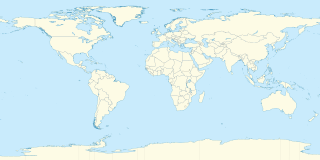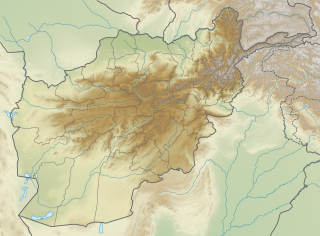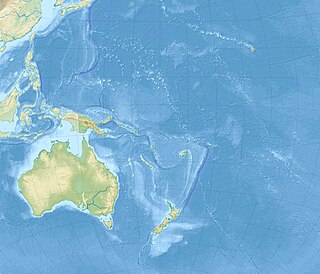 W
WThis is a list of earthquakes in 2013. Only earthquakes of magnitude 6 or above are included, unless they result in damage and/or casualties, or are notable for some other reason. All dates are listed according to UTC time. This year was quite busy with 17 events above magnitude 7 and two above magnitude 8, in Kamchatka and Santa Cruz Islands. Deadly quakes struck Pakistan, Philippines, China and Iran.
 W
WThe 2013 Balochistan earthquakes took place in late September in southwestern Pakistan. The mainshock had a moment magnitude of 7.7 and a maximum Mercalli intensity of VII. At least 825 people were killed and hundreds more were injured. On 28 September, a M6.8 aftershock occurred to the north at a depth of 14.8 kilometres, killing at least 22 people.
 W
WThe 2013 Bohol earthquake occurred on October 15 at 8:12:31 PST in Bohol, an island province located in Central Visayas, Philippines. The magnitude of the earthquake was recorded at Mw 7.2, with epicenter 6 kilometres (3.7 mi) S 24° W of Sagbayan, and its depth of focus was 12 kilometres (7.5 mi). It affected the whole Central Visayas region, particularly Bohol and Cebu. The earthquake was felt in the whole Visayas area and as far as Masbate island in the north and Cotabato provinces in southern Mindanao.
 W
WThe 2013 Dashtestan earthquake struck near the city of Borazjan in southern Iran on November 28 at a depth of 16.4 km (10.2 mi). The shock had a moment magnitude of 5.6 and a maximum perceived intensity of IV on the Mercalli intensity scale. The earthquake killed at least 7 people and another 45 were injured.
 W
WThe 2013 Bushehr earthquake occurred with a moment magnitude of 6.3 on April 9 in Iran. The shock's epicenter was in the province of Bushehr, near the city of Khvormuj and the towns of Kaki and Shonbeh. At least 37 people were killed, mostly from the town of Shonbeh and villages of Shonbeh-Tasuj district, and an estimated 850 people were injured.
 W
WThis is a list of earthquakes in Colombia. Colombia is a seismically active country and has a large seismic risk in many areas of its territory due to its location at the boundaries of the Malpelo, Panama, Caribbean, North Andes and South American Plates along the Pacific Ring of Fire. The southeastern and extreme eastern portions of Colombia are not as seismically active as the rest of the country.
 W
WThe 2013 Laghman earthquake occurred with magnitude of 5.6, with an epicenter 11 km from Mehtar Lam, the capital of Afghanistan's eastern province of Laghman Province near Jalalabad, Afghanistan at 09:25 UTC on April 24. The quake took place 6.6 km down the surface. The tremors were also felt in the neighboring Pakistan and India. There were no immediate reports of any casualty or injury.
 W
WThe 2013 Lake Grassmere earthquake was a magnitude 6.6 earthquake that occurred at 2:31:05 pm (NZST) on Friday 16 August 2013. The epicentre was located about 10 km south-east of Seddon, under Lake Grassmere, with a focal depth of 8 km. The earthquake caused significant land damage in the local area, with landslips blocking roads, including the main highway between Blenheim and Christchurch. Buildings in Seddon were damaged, with some being declared uninhabitable. The earthquake was widely felt in both the North and South Islands of New Zealand.
 W
WThe Lushan earthquake or Ya'an earthquake occurred at 08:02 Beijing Time on April 20, 2013. The epicenter was located in Lushan County, Ya'an, Sichuan, about 116 km (72 mi) from Chengdu along the Longmenshan Fault in the same province heavily impacted by the 2008 Sichuan earthquake. The magnitude of the earthquake was placed at Ms 7.0 by China Earthquake Data Center, Ms 7.0 by Russian Academy of Sciences, Mw 7.0 by Geoscience Australia, Mw 6.6 by the United States Geological Survey (USGS), Mw 6.6 by the European Alert System (EMSC) and Mj 6.9 by the Japan Meteorological Agency (JMA). 1,815 aftershocks have been recorded as of 00:00 (UTC+8h) April 22.
 W
WThe 2013 Saravan earthquake occurred with a moment magnitude of 7.7 at 15:14 pm IRDT (UTC+4:30) on 16 April. The shock struck a mountainous area between the cities of Saravan and Khash in Sistan and Baluchestan Province, Iran, close to the border with Pakistan, with a duration of about 25 seconds. The earthquake occurred at an intermediate depth in the Arabian plate lithosphere, near the boundary between the subducting Arabian Plate and the overriding Eurasian Plate at a depth of about 80 km.
 W
WThe 2013 Seddon earthquake measured 6.5 on the Mww scale and was centred in New Zealand's Cook Strait, around 20 kilometres (12 mi) east of the town of Seddon in Marlborough. The earthquake struck at 5:09:30 pm on Sunday 21 July 2013 at a depth of 13 kilometres (8 mi), according to Geonet. The United States Geological Survey also measured the quake at 6.5, at a depth of 17 kilometres (11 mi). The quake caused moderate damage in the wider Marlborough area and Wellington, the nation's capital city 55 kilometres (34 mi) north of the epicentre. Only minor injuries were reported. Several aftershocks occurred during 21–29 July.
 W
WThe 2013 Solomon Islands earthquake struck northeast of Australia on 6 February with a moment magnitude of 8.0 and a maximum Mercalli intensity of VIII (Severe). Its epicenter was the Solomon Islands, at the boundaries of the Australian and Pacific tectonic plates, causing local evacuations and a tsunami of 1.5 m (4.9 ft) and killing at least nine people.
 W
WThe 2013 Aceh earthquake struck the Indonesian island of Sumatra on July 2 with a moment magnitude of 6.1 and a maximum Mercalli intensity of VIII (Severe). The strike-slip earthquake killed at least 35 people and injured 276 others in the province of Aceh where approximately 4,300 homes were damaged or destroyed.
 W
WOn 22 July 2013, a series of earthquakes occurred in Dingxi, Gansu. The first quake struck at 07:45 China Standard Time with the epicenter located at the border of Min County and Zhang County. The magnitude of the initial earthquake was placed at Ms 6.6 by the China Earthquake Data Center with a focal depth of 20.0 kilometres (12 mi). It was measured at Mw 5.9 by the United States Geological Survey (USGS) and Mw 6.0 by the European Alert System. Another strong quake occurred about one hour later, measured at 5.6 magnitude by the USGS. As of 18:00 CST, 22 July 2013, 422 aftershocks had been recorded. The earthquakes were also felt in the nearby cities of Tianshui and Lanzhou in Gansu, as well as Xi'an, Baoji, and Xianyang in neighbouring Shaanxi.
 W
WThe 2013 Nantou earthquake struck central Taiwan with a moment magnitude of 6.2 on 2 June at 1:43 p.m. local time. The epicenter was located in mountainous terrain in Ren'ai Township, Nantou County, Taiwan, not far from Sun Moon Lake, close to the epicentre of another large earthquake a little over two months earlier. News reports indicate that five people were killed; three in Nantou County and two in neighbouring Chiayi County. The earthquake could be felt in Hong Kong, Zhejiang, Fujian, and Guangdong, China.
 W
WThe 2013 Nantou earthquake struck central Taiwan with a moment magnitude of 5.9 and a maximum Mercalli intensity of V (Moderate) on March 27 at 10:03 a.m. local time. The epicenter was located in mountainous terrain in Ren'ai Township, Nantou County, Taiwan, not far from Sun Moon Lake.
 W
WThe 2013 Okhotsk Sea earthquake occurred with a moment magnitude of 8.3 at 15:44:49 local time on 24 May. It had an epicenter in the Sea of Okhotsk and affected primarily Asian Russia, especially the Kamchatka Peninsula where the shaking lasted for five minutes. Due to its great depth (609 km), it was not particularly intense at the surface, but was felt over a very large area. Such a deep-focus earthquake could be felt not only in areas surrounding the Okhotsk Sea but also in places as far as Tokyo, Nanjing, Atyrau, and Moscow. The shaking prompted almost 900 residents to leave their homes in Moscow.
 W
WThe 2009–20 Oklahoma earthquake swarms are a series of human activity-induced earthquakes affecting central Oklahoma, southern Kansas, northern Texas. Beginning in 2009, the frequency of earthquakes in the U.S. state of Oklahoma rapidly increased from an average of fewer than two 3.0+ magnitude earthquakes per year since 1978 to hundreds each year in the 2014–17 period. Thousands of earthquakes have occurred in Oklahoma and surrounding areas in southern Kansas and North Texas since 2009. Scientific studies attribute the rise in earthquakes to the disposal of wastewater produced during oil extraction that has been injected more deeply into the ground.